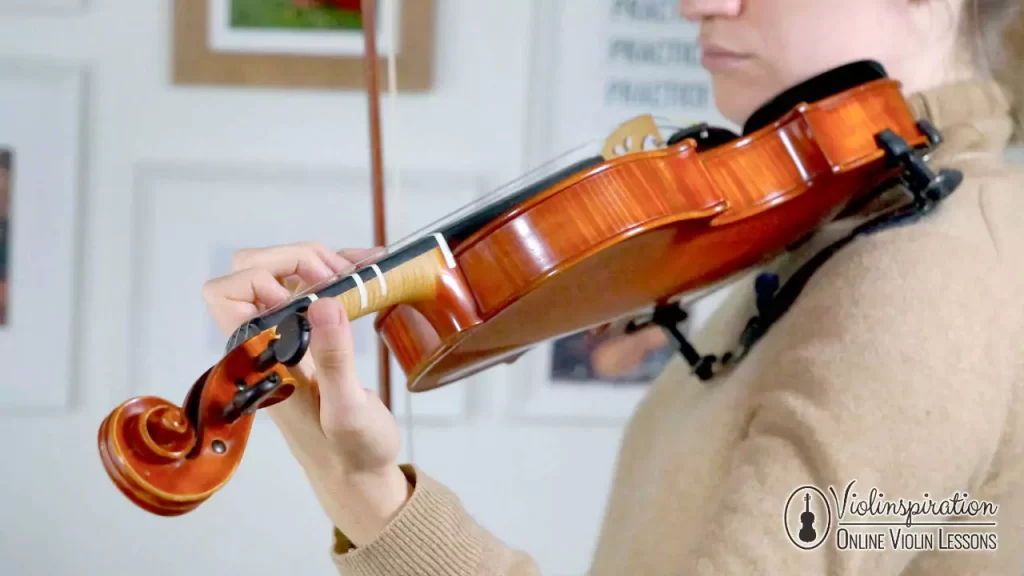How to Hold a Violin
Holding a violin correctly is crucial for producing a beautiful tone, maintaining proper technique, and preventing physical strain or injury. The way you hold the instrument affects your ability to play with ease, accuracy, and expression. In this comprehensive guide, we’ll walk you through the steps to achieve the proper violin hold and provide tips for maintaining a comfortable and efficient playing position.
Posture and Stance
Before we delve into the specifics of holding the violin, it’s essential to establish a solid foundation with your posture and stance. This will ensure that your body is aligned and relaxed, allowing you to play with ease and control.
Sitting Position
- Sit toward the front half of your chair, keeping your back straight and your shoulders relaxed.
- Align your left foot slightly in front of your right, creating a stable base.
- Keep your knees slightly apart, with your feet flat on the floor.
- Avoid crossing your legs or slouching in the chair.
Standing Position
- Stand with your feet shoulder-width apart, knees slightly bent.
- Keep your weight evenly distributed on both feet.
- Maintain a straight back, with your shoulders relaxed and your head held high.
- Avoid locking your knees or leaning to one side.
Holding the Violin
- Place the violin on your left shoulder, with the broad end resting on your collarbone.
- Tilt your head slightly to the left, allowing your chin to rest comfortably on the chin rest.
- Angle the violin so that the strings are parallel to the floor.
- Keep the violin’s neck in line with your left arm, forming a straight line from your left shoulder to your left hand.
Positioning the Left Hand
- Place your left hand on the neck of the violin, with your thumb on the side of the neck and your fingers curled over the fingerboard.
- Keep your thumb and index finger in a “C” shape, with a slight space between them.
- Avoid gripping the neck too tightly or pressing your thumb against the fingerboard.
- Keep your wrist straight and your elbow comfortably below the violin.
Using a Shoulder Rest
- Adjust the shoulder rest to fit your shoulder and neck comfortably.
- Ensure that the shoulder rest is securely attached to the violin.
- Position the shoulder rest so that it supports the violin without causing any discomfort.
- Experiment with different shoulder rest models and heights to find the most suitable option for your body.
Maintaining a Relaxed Grip
- Keep your left hand relaxed and flexible, avoiding tension or gripping.
- Allow your fingers to curve naturally over the fingerboard.
- Maintain a gentle pressure with your thumb and index finger, just enough to keep the violin in place.
- Release any tension in your hand and arm as you play.
Adjusting the Violin’s Position
- Keep the violin’s angle relatively steady, with the strings parallel to the floor.
- Avoid tilting the violin too far forward or backward.
- Maintain a comfortable distance between the violin and your body, allowing for freedom of movement.
- Experiment with small adjustments to find the most natural and efficient position for your body.
Practicing Proper Holding Techniques
- Regularly practice holding the violin without playing, focusing on maintaining a relaxed and efficient grip.
- Use a mirror or ask a teacher for feedback to ensure that you are holding the violin correctly.
- Be patient with yourself as you develop muscle memory and find the most comfortable holding position.
- Regularly check in with your body, releasing any tension or discomfort as you play.
Conclusion
Holding a violin correctly is essential for developing good technique, preventing injury, and producing a beautiful tone. By following the steps outlined in this guide and practicing regularly, you can establish a comfortable and efficient holding position that will serve you well throughout your musical journey. Remember to always prioritize relaxation and comfort, and don’t hesitate to seek guidance from a qualified teacher or experienced violinist.
FAQ Section
Q1: How long should I practice holding the violin without playing?
A1: As a beginner, you can practice holding the violin without playing for several minutes at a time, focusing on maintaining a relaxed and efficient grip. Gradually increase the duration as you become more comfortable with the holding position.
Q2: Can I use a shoulder rest if I have a short neck?
A2: Yes, a shoulder rest can be beneficial for players with shorter necks or sloping shoulders. Experiment with different models and heights to find the most comfortable and supportive option for your body.
Q3: How do I know if I’m gripping the violin too tightly?
A3: If you experience pain, tension, or cramping in your left hand or arm, it may be a sign that you are gripping the violin too tightly. Regularly check in with your body and make adjustments as needed to maintain a relaxed and efficient holding position.
Q4: Can I play the violin while standing?
A4: Yes, playing the violin while standing is common, especially in orchestral settings. Maintain the same principles of proper posture and holding position as you would while sitting, adjusting your stance to ensure stability and freedom of movement.
Q5: How often should I adjust my holding position?
A5: It’s essential to regularly check in with your holding position and make adjustments as needed. As you progress in your playing, your body may change, and you may need to adapt your holding position accordingly. Consult with your teacher or a qualified professional for guidance on maintaining a healthy and efficient holding position over time.For more information on violin technique and playing, you can refer to the Wikipedia page on Violin Technique.
Summary Table
| Step | Description |
|---|---|
| Establish Proper Posture | Sit or stand with a straight back, relaxed shoulders, and stable base |
| Position the Violin | Place the violin on your left shoulder, tilting your head slightly to the left |
| Hold the Neck with Left Hand | Curve your fingers over the fingerboard, keeping your thumb and index finger in a “C” shape |
| Use a Shoulder Rest (if needed) | Adjust the shoulder rest to fit your body comfortably |
| Maintain a Relaxed Grip | Keep your left hand flexible, avoiding tension or gripping |
| Adjust the Violin’s Position | Keep the strings parallel to the floor, maintaining a comfortable distance from your body |



